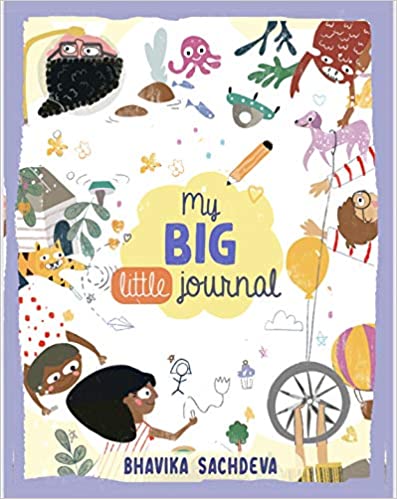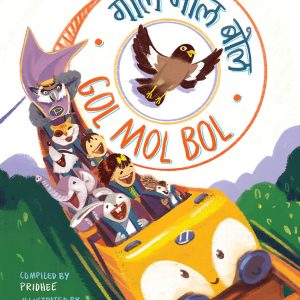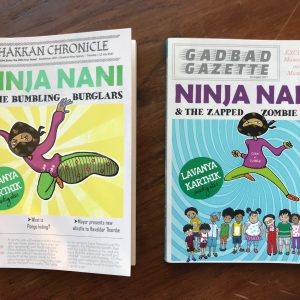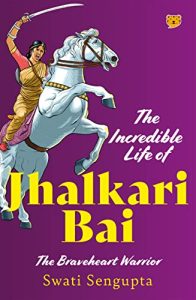Self-help is the best help. Many people have taken to journaling in the pandemic. The time-tested technique works with children and adults alike. As journaling becomes the norm of our times, My Big Little Journal by Bhavika Sachdeva ticks the boxes for journaling with children. Bookedforlife converses with Sachdeva….
Recently, there has been an influx of journals targeted specifically for parents and children. What makes journaling a perfect bonding activity for the parent-child duo?

This influx of journals is very heartening to hear. I think it’s best to start with the “Why” to My BIG Little Journal’s story. The Lockdown in 2020 created a lot of turmoil in all our lives. There were the obvious problems that were going on around the world. however, a big point we all seemed to be missing was the big turmoil going about inside of our little children.
My super chirpy and social 5-year-old was one such child who was scared and upset and missing having a life she considered normal.
I guess journaling is what I started to do with her to get in touch with her feelings, to be able to identify big emotions and how to deal with them. At the time I was not able to find a customized solution to help me help her. So, I spent my time researching on positive psychology and toolkits.
Moreover, I am a “Self-help Buff” who would loves to devour any content to do with personal growth. I have been journaling for as long as I can remember. I found it apt to convert the things I learnt into easy to do and child friendly activities.
The book is nothing but a curation of things and concepts I worked on with my daughter at the time and everything she loved doing from what all I made for her.
My Big Little Journal introduces concepts such as gratitude, affirmations, self-awareness and so on in a manner that is easily assimilated by children. As adults, we have a lot of self-help literature focusing on these concepts. What were the special challenges and requirements for these to be translated into understandable bytes of information for young kids?
In the beginning, it was not easy. I often found myself frustrated with trying to explain concepts related to emotions. Things I found so easy and relatable were alien to my child no matter how many times I tried to explain them to her.
And then, just like that, it clicked. It was really as easy as going to her level. We created games for instance. We actually translated the thoughts into games such as “Roll a monster emotion” “ Kindness Bingo” “ The 7 day Family Challenge” etc.
The key is, Keep it simple. Keep it direct. Encourage PLAY. Because no matter what their age, if you want your child to respond, you have to resonate with them.
I started sharing these activities with other parents. The response I received was unprecedented and totally unexpected.
The kind of gratitude which parents expressed was the push I needed to convert this into a book and reach out to as many parents as I could. I realized that I had managed to create the tool kit which I had spent so much time looking for myself.
What’s the ideal age group of children who would benefit from this journal?
You can start with them as young as 4. Starting with the affirmations, the wall of positivity and colour-me pages. The book is beneficial for and being used by kids up to the age of 11.
What’s the thought-process behind having weekly themes?
I would have loved to make them Monthly. But kids tend to get ‘bored’ easily.
One week is a minimum of what we need to inculcate a thought in their mind while keeping it new and exciting. There are many pages that encourage self- play as well. Once the parent has introduced a concept, the child can take forward the activities independently. While the concepts span a week in the journal, many users tell me that they have taken up to two weeks to complete them at their pace. And, that’s fine!
How can a parent-child duo derive maximum benefit from the journal? What are your tips to them?
- It’s best to set a time to sit together and do the Journal. This is for a self – commitment from the parent’s side.
- Keep your phone aside. The child knows how involved you are when you are with them.
- I believe in Quality time over Quantity time. 20 minutes in the day of meaningful conversation with them is more valuable to them than being with them through the day.
- Remember, the book is to encourage bonding time and have FUN. So don’t make it like work and force them into doing a page, Instead, if your child doesn’t feel like it, you can use the Journal prompts in the book and the direct conversation as you want.
Once parents and children have completed this journal, how can they take the experience forward?
The book is just a tool to unlock conscious parenting, conversations, understanding and guide bonding. Use it. And then continue with this “bonding time” however you please. The idea is for your children to know that you are available, you are here for them, you see the goodness in them and you value them.
Values in a child do not sprout from what we do once in a while, but what we do with them every day. Small things like “the magic stone” and “what are you grateful for today” can be incorporated in their bedtime Routines or in the Premeal conversations.
The parting shot…
I have no words to express how overwhelming these last few months have been. The feedback has been overflowing and so have my tears of gratitude. It has felt like God’s hands at play!




